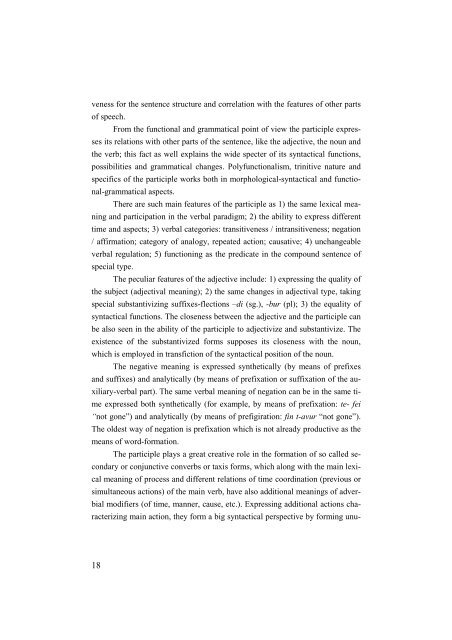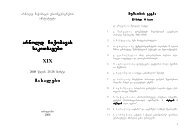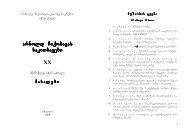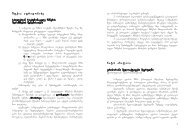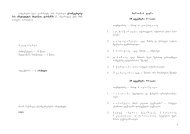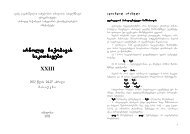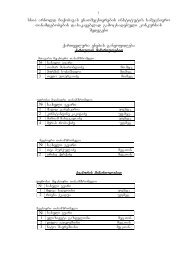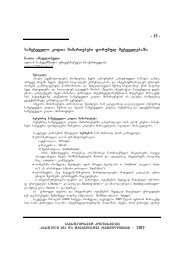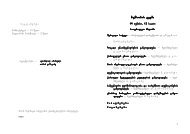5 r. a b a S i a (Tbilisi) bgeraTSesatyvisobis erTi rigisaTvis qarTvelur ...
5 r. a b a S i a (Tbilisi) bgeraTSesatyvisobis erTi rigisaTvis qarTvelur ...
5 r. a b a S i a (Tbilisi) bgeraTSesatyvisobis erTi rigisaTvis qarTvelur ...
You also want an ePaper? Increase the reach of your titles
YUMPU automatically turns print PDFs into web optimized ePapers that Google loves.
veness for the sentence structure and correlation with the features of other parts<br />
of speech.<br />
From the functional and grammatical point of view the participle expresses<br />
its relations with other parts of the sentence, like the adjective, the noun and<br />
the verb; this fact as well explains the wide specter of its syntactical functions,<br />
possibilities and grammatical changes. Polyfunctionalism, trinitive nature and<br />
specifics of the participle works both in morphological-syntactical and functional-grammatical<br />
aspects.<br />
There are such main features of the participle as 1) the same lexical meaning<br />
and participation in the verbal paradigm; 2) the ability to express different<br />
time and aspects; 3) verbal categories: transitiveness / intransitiveness; negation<br />
/ affirmation; category of analogy, repeated action; causative; 4) unchangeable<br />
verbal regulation; 5) functioning as the predicate in the compound sentence of<br />
special type.<br />
The peculiar features of the adjective include: 1) expressing the quality of<br />
the subject (adjectival meaning); 2) the same changes in adjectival type, taking<br />
special substantivizing suffixes-flections –di (sg.), -bur (pl); 3) the equality of<br />
syntactical functions. The closeness between the adjective and the participle can<br />
be also seen in the ability of the participle to adjectivize and substantivize. The<br />
existence of the substantivized forms supposes its closeness with the noun,<br />
which is employed in transfiction of the syntactical position of the noun.<br />
The negative meaning is expressed synthetically (by means of prefixes<br />
and suffixes) and analytically (by means of prefixation or suffixation of the auxiliary-verbal<br />
part). The same verbal meaning of negation can be in the same time<br />
expressed both synthetically (for example, by means of prefixation: te- fei<br />
“not gone”) and analytically (by means of prefigiration: fin t-avur “not gone”).<br />
The oldest way of negation is prefixation which is not already productive as the<br />
means of word-formation.<br />
The participle plays a great creative role in the formation of so called secondary<br />
or conjunctive converbs or taxis forms, which along with the main lexical<br />
meaning of process and different relations of time coordination (previous or<br />
simultaneous actions) of the main verb, have also additional meanings of adverbial<br />
modifiers (of time, manner, cause, etc.). Expressing additional actions characterizing<br />
main action, they form a big syntactical perspective by forming unu-<br />
18


